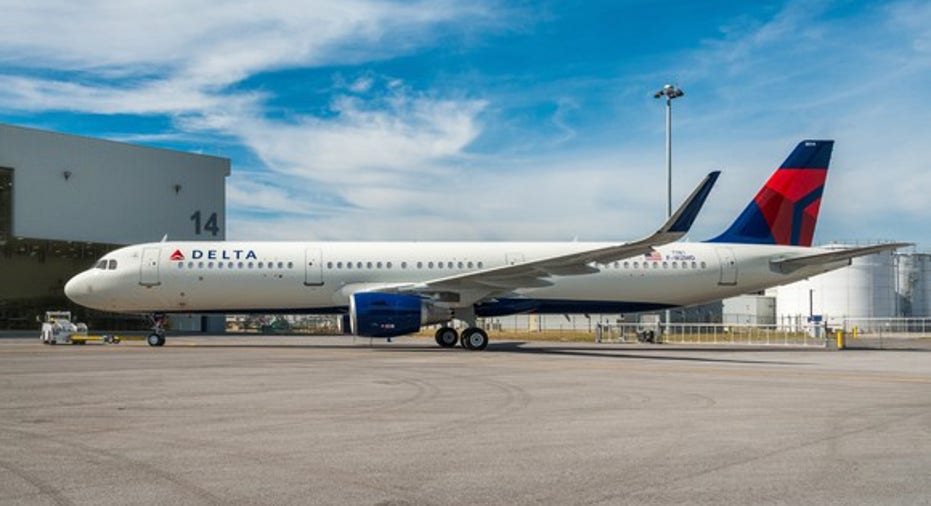Capital Spending Ramps Up at Delta Air Lines

Delta Air Lines' (NYSE: DAL) remarkable turnaround after the Great Recession was driven by a commitment to operational excellence, a smart route planning strategy, and an extremely frugal approach to capital spending.
Delta's operational performance has reached new records in the past two years, with flight cancellations becoming quite rare. Meanwhile, its route network remains more or less the same. However, its capital spending has steadily crept higher in recent years. Should Delta Air Lines shareholders be worried?
A capex diet
Following the Great Recession, Delta's management cracked down on capital spending. First, instead of replacing its planes with new ones as soon as they reached 25 years of age, Delta Air Lines worked to keep aircraft in service longer -- beyond 30 years, in some cases. Second, to the extent that it did retire planes, Delta scoured the used aircraft market for bargain replacements.
Delta is known for keeping older planes in service longer than rivals. Image source: Delta Air Lines.
These initiatives allowed Delta to hold capex below $1.3 billion annually from 2009 to 2011. Capital spending crept up toward $2 billion in 2012 and 2013, but that was still well below the 1998-2001 peak of more than $4 billion in annual capital spending.
In mid-2013, Delta announced a five-year capital plan that called for spending $2 billion to $2.5 billion annually on capex. At the time, management called this a sustainable level.
New planes galore
Despite this plan, Delta Air Lines has ordered a ton of new planes in the past few years. As these planes have started to arrive, capital spending has surged higher.
In 2014, Delta remained well within its long-term capital plan, with capex of $2.2 billion. However, capex surged to $2.9 billion in 2015 -- excluding $500 million invested in two foreign airlines and $276 million spent to acquire slots at London's Heathrow Airport -- and reached $3.2 billion in 2016.
Delta hasn't even begun to receive planes from its two biggest plane-buying sprees of the past few years. In November 2014, Delta ordered 50 long-haul planes from Airbus (NASDAQOTH: EADSY), consisting of 25 A350-900s and 25 A330-900neos. Last April, it agreed to buy 37 Airbus A321 jets along with 75 Bombardier CS100 jets to continue overhauling its domestic fleet.
Delta is adding dozens of Airbus A321s to its fleet. Image source: Delta Air Lines.
The first planes from the Airbus orders will arrive this year, and the Bombardier CSeries jets will be delivered from 2018 to 2022. As a result, committed aircraft capital spending is $2.6 billion in 2017, rising to $3.0 billion in 2018 and peaking at $3.4 billion in 2019.
Additionally, while buying airplanes drives the bulk of airlines' capital expenditures, they must also invest in ground facilities and technology. Delta's non-aircraft capex has exceeded $700 million in each of the past two years. Based on the company's plan to invest $450 million in technology during 2017, non-aircraft capital spending appears poised to rise further.
Is Delta Air Lines losing its discipline?
Depending on Delta's non-aircraft spending in the coming years, annual capex for the 2017-2019 period is likely to average $3.5 billion to $4.0 billion. That's far above its targets from just a few years ago. (This also doesn't include strategic investments in other airlines, such as its pending acquisition of a big stake in Aeromexico.)
This sudden aircraft-buying binge is somewhat perplexing, as fuel prices are far lower today than in 2011 and 2012, when Delta was snapping up lots of used airplanes. Lower fuel prices should reduce the need to buy new, fuel-efficient aircraft. Additionally, rising production by Boeing and Airbus is driving up the supply of used aircraft.
On the other hand, new airplanes do offer significant benefits aside from fuel efficiency, such as lower maintenance costs. Additionally, the case for used aircraft is less clear for widebodies, as reliability and fuel efficiency are critical for succeeding in long-haul markets.
Most importantly, Delta appears to have gotten very good pricing from Bombardier and Airbus. Bombardier was eager to land a marquee customer for its new, state-of-the-art CSeries jet family. Meanwhile, Airbus needed to sell a bunch of the last A321 delivery slots before it switches production to the A321neo. It also needed a prominent customer for the new A330neo family.
As a result, Delta will be able to replace more than a quarter of its fleet over the next five years at a very reasonable cost of around $12 billion. There may be a temporary dip in free cash flow, but it should lead to lower capex needs for Delta during the 2020s.
In the grand scheme of things, Delta Air Lines still manages its capital spending better than most airlines. Investors shouldn't be too concerned about its recent capex increases.
10 stocks we like better than Delta Air LinesWhen investing geniuses David and Tom Gardner have a stock tip, it can pay to listen. After all, the newsletter they have run for over a decade, Motley Fool Stock Advisor, has tripled the market.*
David and Tom just revealed what they believe are the 10 best stocks for investors to buy right now... and Delta Air Lines wasn't one of them! That's right -- they think these 10 stocks are even better buys.
Click here to learn about these picks!
*Stock Advisor returns as of February 6, 2017
Adam Levine-Weinberg owns shares of Boeing and Delta Air Lines. The Motley Fool has no position in any of the stocks mentioned. The Motley Fool has a disclosure policy.



















